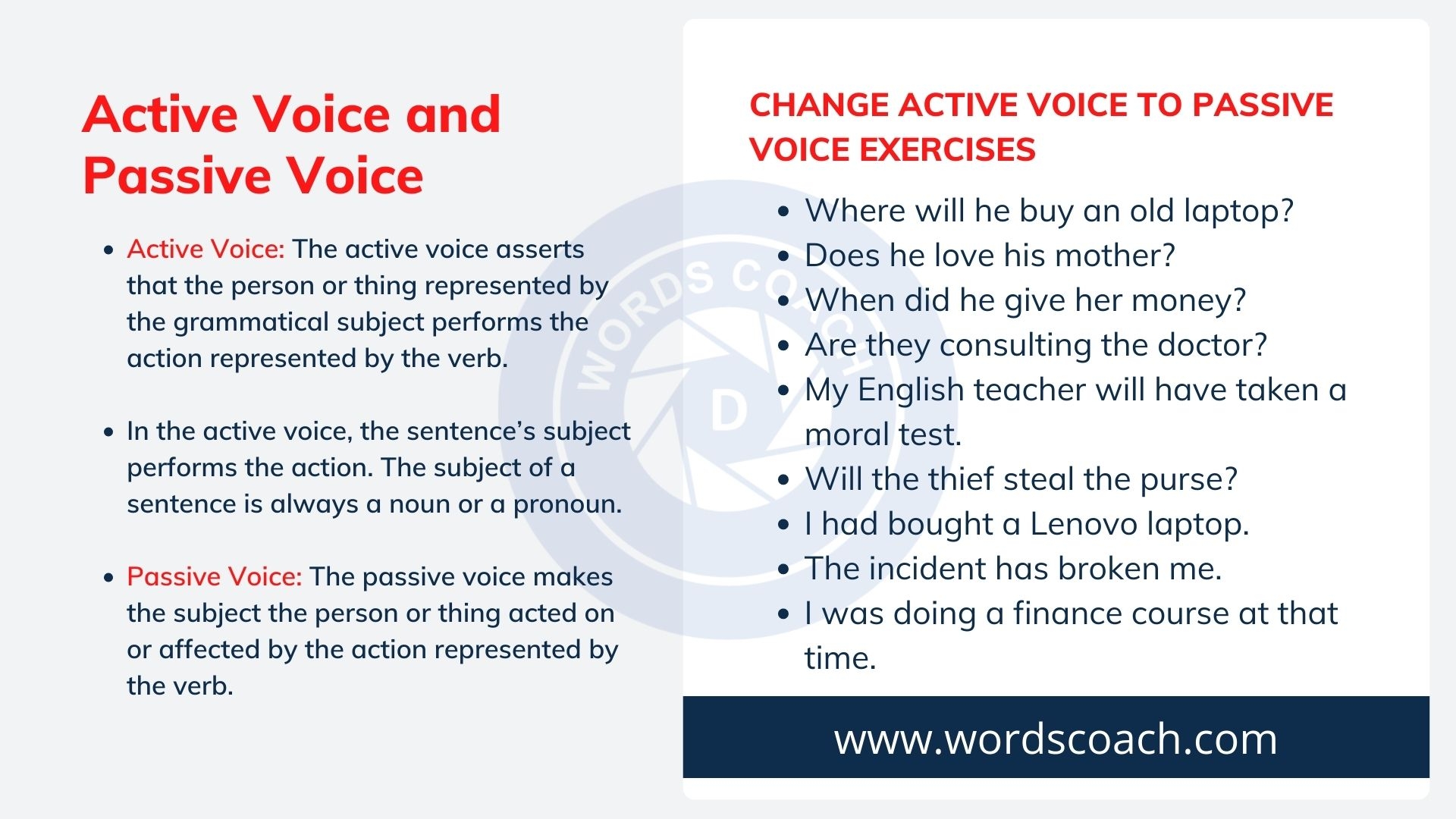When it comes to writing, understanding the difference between active voice and passive voice is essential. These two forms of voice can greatly impact the clarity and effectiveness of your writing. By knowing when to use each, you can improve the overall quality of your work.
Active voice is a type of sentence or clause in which the subject performs the action of the verb. This creates a clear and direct sentence structure that is easy to read and understand. Passive voice, on the other hand, is when the subject of the sentence is acted upon by the verb. This can often lead to more wordy and convoluted sentences that can be harder to follow.
Active Voice and Passive Voice Difference
In active voice, the subject of the sentence is doing the action. For example, “The dog chased the cat.” The subject “dog” is actively chasing the object “cat.” This construction is straightforward and emphasizes the action being taken.
On the other hand, in passive voice, the subject of the sentence is being acted upon. For example, “The cat was chased by the dog.” Here, the subject “cat” is not actively doing anything; instead, it is being chased by the object “dog.” Passive voice can be useful in certain situations, such as when the doer of the action is unknown or when the focus is on the recipient of the action.
However, passive voice can also make sentences more complicated and less engaging. By using active voice, you can create more dynamic and concise writing that is easier for your readers to follow. It is important to be mindful of when to use each form of voice in order to effectively convey your message.
Overall, understanding the difference between active voice and passive voice is crucial for effective communication in writing. By utilizing active voice, you can create clear and engaging sentences that capture the reader’s attention. While passive voice has its place, it is important to use it sparingly and strategically to maintain clarity and coherence in your writing.
In conclusion, mastering the use of active voice and passive voice can greatly enhance the impact of your writing. By knowing when to use each form of voice, you can improve the overall quality and readability of your work. So next time you sit down to write, consider the voice you are using and choose the one that best suits your message.
